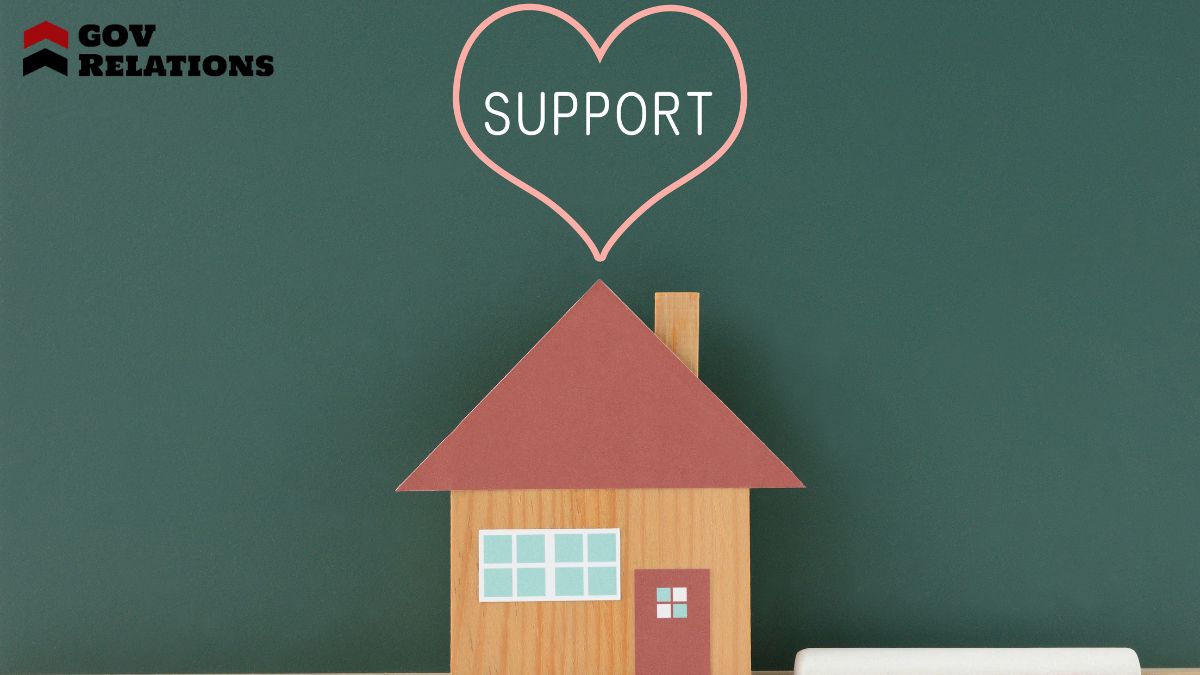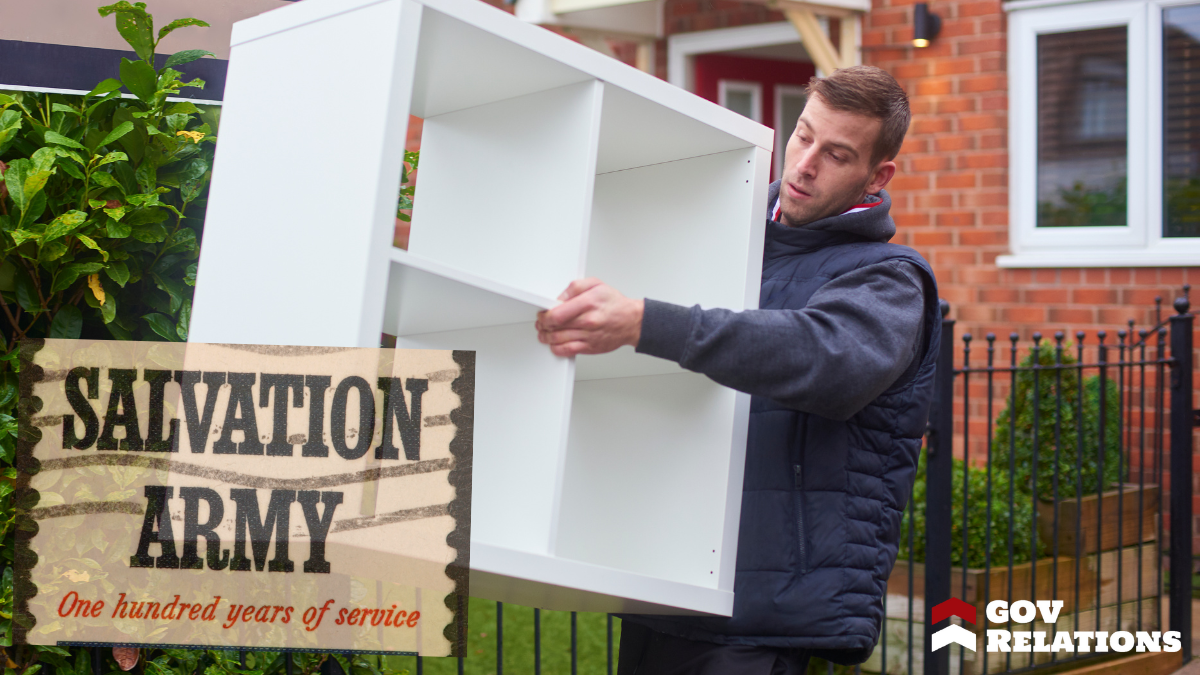When you think about which state helps the most with housing, California often comes to mind due to its extensive programs and policies. But is it truly the leader, or do other states quietly surpass it in their support efforts? Consider how states like New York or Massachusetts stack up with their own innovative approaches and rental assistance programs. Each state employs unique strategies to tackle housing challenges, but what criteria should you use to evaluate their effectiveness? As you explore this topic, you might be surprised by which state truly stands out in providing the most thorough housing assistance.
Key Takeaways
- California allocates substantial funds for homelessness and affordable housing, including initiatives like the California Housing Accelerator.
- New York offers extensive rental assistance programs, including the Housing Trust Fund Corporation and the Mitchell-Lama program.
- Massachusetts implements the Housing Choice Initiative and RAFT to support affordable housing and families at risk of homelessness.
- Texas funds rapid rehousing and post-pandemic rental assistance through the Texas Rent Relief Program.
- Oregon invests in sustainable housing solutions, focusing on energy-efficient practices and modular housing for homelessness.
Criteria for Evaluating Housing Support

When considering housing assistance, what key criteria should you evaluate? First, assess eligibility requirements. Different programs have varying income limits, family size considerations, and residency prerequisites. You'll want to verify you meet these before applying.
Next, examine the types of assistance offered. Some programs provide rental subsidies, while others might offer down payment assistance for homebuyers. Knowing what's available will help you determine which program suits your needs.
Additionally, consider the application process. Some programs have lengthy waitlists or complex paperwork. Understanding the time commitment and necessary documentation will prepare you for the process and prevent unnecessary delays.
Investigate the support services included. Some housing assistance programs offer financial counseling, job training, or educational workshops to help you maintain long-term stability.
Finally, the funding stability of programs must be checked. Programs with consistent funding are more reliable and less likely to experience disruptions. You'll want to avoid programs that frequently face budgetA detailed financial plan outlining the projected costs of the project, including personnel, equipme... cuts or closures, as these can jeopardize your housing security.
Leading States in Housing Assistance
When you look at the leading states in housing assistance, you'll notice top programs that make a real difference for residents.
State funding plays a vital role in these efforts, ensuring that resources are available for innovative housing solutions.
Top Housing Assistance Programs
Several states in the U.S. stand out for their leading housing assistance programs, each offering innovative solutions to tackle housing affordability and stability.
If you're looking for examples, California's Section 8 Housing Choice Voucher Program is a game-changer. It helps low-income families, the elderly, and disabled individuals afford decent housing in the private market.
You'll find that California also supports renters with its Homeless Housing, Assistance, and Prevention Program, focusing on long-term housing solutions.
New York doesn't fall short either. The state's Housing Trust Fund Corporation is instrumental in providing affordable housing and community renewal.
You might be interested in the Mitchell-Lama program, offering affordable rentals and co-ops to moderate-income families.
Over in Massachusetts, the Residential Assistance for Families in Transition (RAFT) program helps families at risk of homelessness. It provides temporary financial assistance, ensuring you don't lose your home due to unforeseen circumstances.
Texas also shines with its Texas Rent Relief Program, offering rental and utility assistance to those financially impacted by the pandemic.
These programs highlight how states are proactively addressing housing issues, ensuring you have access to stable and affordable living situations.
State Funding for Housing
Amid rising housing challenges, state funding for housing has become an essential tool in providing affordable and stable living options across the U.S. Some states stand out for their commitment to housing assistance, ensuring their residents have access to necessary resources.
California, for instance, allocates notable funds to tackle homelessness and expand affordable housing. They've implemented programs like the California Housing Accelerator, which speeds up project development by offering financial support.
New York is another leader, dedicating considerable funding to preserve and create affordable housing units. Their Housing and Community Renewal agency actively works on financing and maintaining low-income properties.
Additionally, the state's supportive housing initiatives help vulnerable populations secure stable homes.
In contrast, Massachusetts focuses on innovative funding models. They've committed to the Housing Choice Initiative, which provides financial incentives to municipalities that prioritize housing growth and development. This initiative encourages communities to embrace diverse housing options.
Don't forget about Texas, which channels funds into the Texas Department of Housing and Community Affairs. They offer various programs, from rental assistance to homebuyer education, ensuring thorough support for residents.
Innovative Housing Solutions
Innovation in housing solutions is shaking things up across the nation, with certain states leading the charge in providing creative approaches to housing assistance.
If you're curious about what's happening, search no more than these leading examples of innovation.
1. California: Known for its high housing costs, California is pioneering the use of accessory dwelling units (ADUs) to increase affordable housing.
By easing zoning laws, they've made it easier for homeowners to build small units on their property, providing more housing options for renters.
2. Oregon: This state is tackling homelessness head-on by investing in modular housing and tiny home villages.
These cost-effective solutions provide immediate shelter and a sense of community for those in need. Oregon's approach is both practical and scalable, setting an example for others.
3. New York: With its dense urban environment, New York is focusing on converting underutilized hotels and office spaces into housing for the homeless.
This not only addresses the immediate need for shelter but also revitalizes vacant properties, making efficient use of available resources.
Innovative Housing Policies
When you explore innovative housing policies, you'll find that rent control initiatives and affordable housing programs are at the forefront.
These strategies aim to guarantee that housing remains accessible and sustainable for everyone.
Rent Control Initiatives
Rent control initiatives are sparking debate across various states as they explore innovative housing policies to tackle affordability issues.
You're probably aware that these policies aim to stabilize rent prices and prevent excessive increases, which can benefit tenants. However, landlords often argue that such regulations can lead to decreased investment in rental properties and maintenance issues.
Let's break down what rent control can mean for you and your community:
- Tenant Protection: Rent control provides tenants with financial predictability. You won't face sudden rent hikes, making it easier to budget and plan for the future.
- Housing Supply Challenges: Critics argue that rent control might deter new housing development. When returns on investment are capped, developers might be less inclined to build, potentially leading to a housing shortage over time.
- Community Stability: Rent control can promote long-term residency, helping to foster community ties. You get to know your neighbors, which can lead to a more cohesive and supportive neighborhood environment.
Affordable Housing Programs
As debates around rent control continue, states are also exploring a variety of affordable housing programs to address the broader issue of housing affordability. These programs aim to make housing more accessible, especially for low- to moderate-income families.
You might be interested in learning about inclusionary zoning, where developers are required to include affordable units in new residential developments. This policy helps integrate different income levels in the same community, fostering diversity and access.
Another innovative policy is community land trusts. Here, you can buy the home but lease the land from a nonprofit, greatly reducing purchase costs. This approach guarantees long-term affordability while allowing you to build equity.
Some states are also investing in modular and prefabricated homes, which can be constructed faster and at a lower cost than traditional housing.
Look into housing vouchers, too. They provide direct financial assistance, helping you bridge the gap between your income and rent. States like Oregon and Minnesota have implemented these programs effectively, easing the financial burden on families.
Rental Assistance Programs
Steering through rental assistance programs can be an important step for those facing financial challenges. These programs aim to bridge the gap between your income and the rising cost of housing, providing a safety net when you need it most.
Maneuvering through these options might seem intimidating, but focusing on the resources available can make a significant difference in securing stable housing.
When exploring rental assistance, consider these three key programs that offer support:
- Section 8 Housing Choice Voucher Program: This program helps low-income families, elderly, and disabled individuals afford decent, safe, and sanitary housing. It allows you to choose your own home, provided it meets program requirements.
- Emergency Rental Assistance Programs (ERAPs): These programs have been vital during economic downturns or crises, offering temporary relief to renters at risk of eviction. They can cover back rent, utilities, and other housing-related expenses.
- State-Specific Rental Assistance: Many states offer tailored programs to address local housing needs. Check your state's housing authority website for information on unique initiatives designed to help residents in your area.
Public Housing Initiatives
Public housing is a cornerstone of affordable living options across the United States, providing essential support to those in need. When you think about states that excel in public housing initiatives, consider how they manage their resources and prioritize these programs. Some states stand out by effectively leveraging federal funds to develop and maintain public housing.
Take New York, for instance. It's known for having one of the largest public housing systems in the country. The New York City Housing Authority (NYCHA) oversees numerous units, offering housing to thousands of low-income families.
California, with its significant housing challenges, also invests heavily in public housing. The state works to address its housing crisis through various initiatives aimed at increasing availability and improving living conditions.
Meanwhile, Massachusetts leads with innovative public housing policies. The state emphasizes mixed-income developments, creating more inclusive communities.
When states prioritize public housing, they not only provide shelter but also foster stability and community growth. It's vital for you to look at how states implement these programs, focusing on transparency, efficiency, and community involvement. Understanding these initiatives helps you appreciate the efforts behind making housing accessible to everyone.
Community-Based Housing Solutions
Explore how community-based housing solutions transform neighborhoods by focusing on local needs and resources. By engaging local residents, these initiatives create sustainable and inclusive environments.
You'll find that community-based efforts often prioritize long-term benefits over short-term gains, empowering residents to take part in the development process. This local involvement guarantees that solutions are tailored to the unique challenges and strengths of each neighborhood.
Consider the following ways community-based housing solutions can make an impact:
- Resident-Led Design: Communities can spearhead housing projects by collaborating with architects and planners, guaranteeing that new developments meet the specific needs of residents. This approach fosters a sense of ownership and pride.
- Partnerships with Local Organizations: By teaming up with local nonprofits and businesses, communities can access additional resources and expertise. These partnerships can provide funding, supplies, or even volunteer labor, which helps stretch limited budgets and achieve greater results.
- Affordable Housing Trusts: These trusts can be established to preserve affordable housing. They're funded by various sources like local government grants, private donations, or community fundraising efforts, guaranteeing long-term affordability and stability.
State Comparison and Analysis

Comparing housing assistance programs across different states reveals diverse approaches and effectiveness in addressing local housing challenges.
You'll notice that some states invest heavily in affordable housing projects, while others focus on rental assistance or homelessness prevention. California, for example, offers extensive programs due to its high cost of living and housing shortages. The state's Low-Income Housing Tax Credit (LIHTC) program is a key player in funding affordable housing developments.
On the other hand, states like Texas prioritize rapid rehousing efforts aimed at reducing homelessness quickly. Texas's Homeless Housing and Services Program (HHSP) provides funding to large cities to support these initiatives, demonstrating a commitment to immediate intervention.
If you're in New York, you'll find a strong emphasis on rental assistance. The New York State Homes and Community Renewal (HCR) agency offers a variety of rental vouchers and subsidies to help low-income families.
Meanwhile, Oregon stands out for its focus on sustainable housing solutions with programs that fund energy-efficient homes and green building practices.
Understanding these variations helps you appreciate how each state tailors its approach to meet specific needs, ultimately influencing which state provides the most effective assistance.
Conclusion
You've explored the landscape of housing support across the U.S., and it's clear that California stands out with its robust programs and innovative policies. By easing zoning laws for ADUs and offering initiatives like the Section 8 Housing Choice Voucher Program, California actively addresses housing shortages. Its commitment to affordable housing solutions sets a benchmark for other states. When evaluating housing support, California's extensive strategies make it a leader in promoting stability for its residents.







